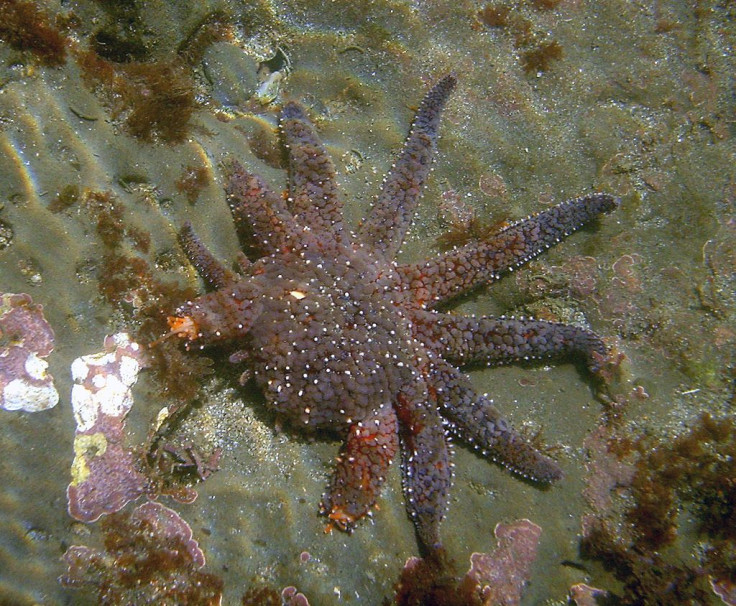Mystery Of Sea Star Wasting Syndrome Solved After Scientists Identify Virus That Causes 'Melting' Starfish

When millions of starfish began spontaneously disintegrating along the West Coast of North America last summer, scientists were at a loss. Was it environmental? A bacteria? Or something anthropogenic? The offender, it turns out, was a previously unknown virus that essentially turns sea stars into “goo,” according to a new study published Monday in the journal Proceedings of the National Academy of Sciences.
The virus belongs to a group of viruses known to cause gastrointestinal symptoms in unvaccinated dogs, according to National Geographic. Scientists named the virus sea star-associated densovirus. Similar viruses have been found in other echinoderms, including sea urchins and sea cucumbers.
The first outbreaks of the so-called starfish wasting syndrome were observed in 1979, but those attacks were isolated and only affected just one or a few species, Smithsonian noted, whereas the large outbreak last summer ran from Canada to Southern California and affected dozens of species.
“There were just bodies everywhere,” scuba diver Laura James, who was one of the first people to document the disease last year, said in February. “There were just splats. It looked like somebody had taken a laser gun and just zapped them and they just vaporized.”
The virus causes the sea stars to become lethargic, making them vulnerable to bacterial infections. Then their limbs start to shrivel and curl. Next, white lesions appear on the body. In some instances, the arms of the sea star actually rip themselves off and crawl away. Eventually, the sea star is nothing more than a pile of white goo.
Exactly how sea stars contract the virus and why it has affected so many in the past year are unknown, but the density of starfish populations in the Pacific Northwest could play a role. "We've seen big outbreaks in sea stars before, but they've been very regional," Pete Raimondi, a marine ecologist with the University of California, Santa Cruz, told National Geographic. "Having a huge number of individuals in a small area works like a reactor for this virus."
Scientists say there’s little they can do to stop future outbreaks of the virus other than hope the populations can recover once the epidemic is over.
© Copyright IBTimes 2024. All rights reserved.






















